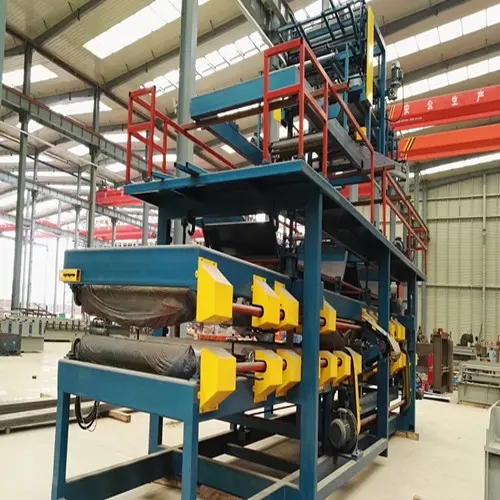
The Role of Gutter Downpipe Roll Forming Machines in Modern Construction
In the ever-evolving field of construction, the efficiency and precision of manufacturing building materials have taken center stage. Among these essential materials are gutters and downpipes, which play a crucial role in managing water runoff from roofs and ensuring the longevity of structures. The production of these components has been significantly enhanced by the advent of gutter downpipe roll forming machines. This article explores the functionality, benefits, and importance of these machines in modern construction.
Gutter downpipe roll forming machines are specialized equipment designed to convert flat metal sheets into pre-defined shapes, specifically for gutters and downpipes. The roll forming process involves passing metal sheets through a series of rollers, each designed to progressively shape the material into the desired profile. This continuous process allows for high production speeds, uniform quality, and reduced waste, making it an efficient choice for manufacturers.
One of the primary advantages of using roll forming machines for gutter and downpipe production is the ability to customize the profiles according to specific project requirements. Different buildings may require various gutter shapes and sizes to effectively manage water flow and match architectural styles. Roll forming machines can easily adjust to produce an array of profiles, reducing lead time and enhancing flexibility for manufacturers. This capability is particularly valuable in regions with varying weather conditions, where the size and design of gutters must adapt to local rainfall patterns.
Additionally, the durability and resilience of the materials used in roll forming contribute to the overall effectiveness of gutters and downpipes. Manufacturers often use materials such as galvanized steel, aluminum, or stainless steel, all of which have excellent corrosion resistance. This choice of materials ensures that the gutters and downpipes maintain their integrity over time, reducing the need for frequent replacements and repairs. Consequently, this aspect not only benefits the environment by minimizing waste but also offers cost savings for building owners.

Furthermore, gutter downpipe roll forming machines are designed to enhance operational efficiency. With automated systems and programmable controls, these machines can operate with minimal human intervention, reducing labor costs and the likelihood of errors. Many modern machines come equipped with advanced technology, such as computer numerical control (CNC), allowing for precise adjustments and consistent outputs. This level of automation fosters a safer working environment and enables manufacturers to scale production according to demand without compromising quality.
The trend toward sustainability in construction has also bolstered the importance of roll forming machines. As the construction industry increasingly prioritizes eco-friendly practices, roll forming aligns perfectly with these goals. The process generates less scrap compared to other manufacturing methods, and the use of recyclable materials further supports sustainability initiatives. Moreover, the lightweight nature of roll-formed gutters and downpipes reduces transportation costs and energy consumption during logistics.
As the construction sector continues to grow and evolve, the demand for reliable and efficient building materials remains at the forefront. Gutter downpipe roll forming machines stand as a testament to innovation within the industry. Their capability to produce customized, durable, and environmentally-friendly products caters to the diverse needs of modern architecture.
In conclusion, gutter downpipe roll forming machines are revolutionizing the manufacturing process of essential building materials. They provide enhanced efficiency, customization options, and sustainability advantages, making them indispensable in today’s construction landscape. As construction methods advance, the integration of these machines signifies a step towards a more efficient and environmentally-conscious industry, ultimately benefiting builders, architects, and property owners alike.